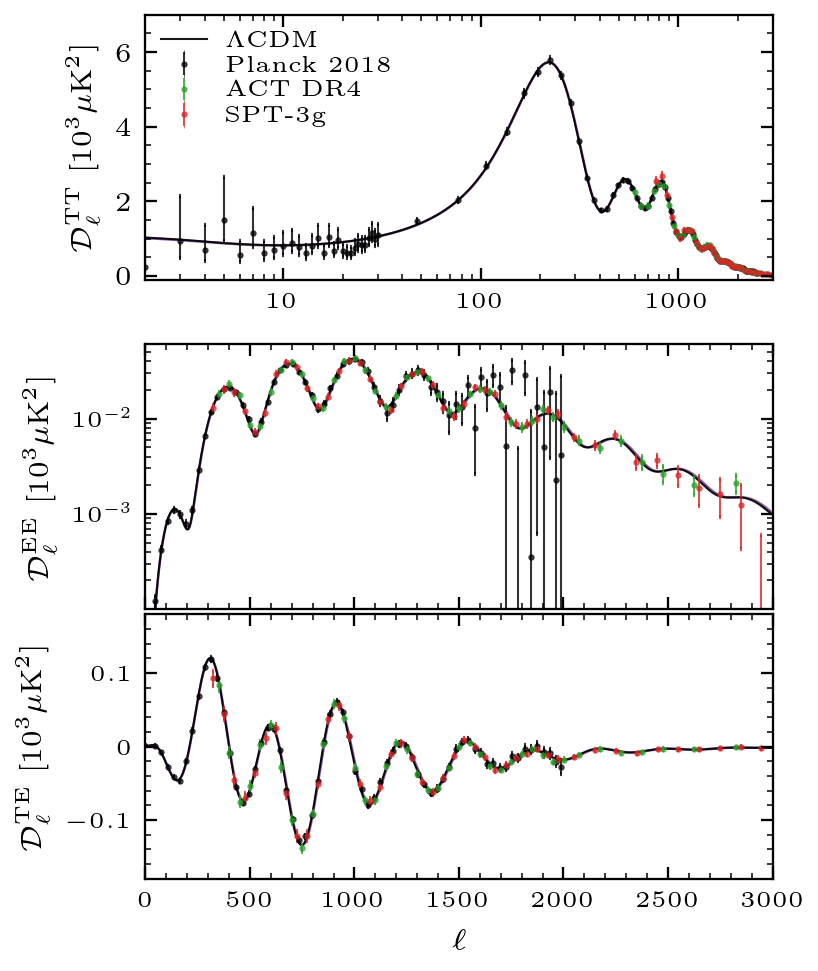Dark Energy
Dark energy plays a central role in the universe's evolution. In the context of the Cosmic Microwave Background (CMB), variations in dark energy density primarily influence the distance to the last-scattering surface. Assuming a flat universe, changes in the initial dark energy density affect this distance by altering the expansion rate of the universe after recombination, i.e. the Hubble parameter. This relationship is captured by the equation below, where \(a\) is the scale factor and \(H_0\) is the Hubble constant today:
\[ {H}^2 (a) = {H}^2_0(\Omega_m a^{-3} + \Omega_\Lambda) \]When the dark energy density, \( \Omega_\Lambda \), increases at a fixed physical matter density, \( \Omega_m h^{2}\), the Hubble rate, \( H \), rises, resulting in a smaller distance to the last-scattering and an increased angular scale (smaller multiple) of the sound horizon. Conversely, if \( \Omega_\Lambda \) is decreased, the distance to the last-scattering will increase due to the smaller Hubble rate shifting the angular scale of the sound horizon to smaller values (larger multipoles). These shifts in the angular scale of the sound horizon manifest as changes in the frequency of the oscillations observed in the CMB power spectra. Specifically, if \( \Omega_\Lambda \) is increased, the peaks will shift to the left (smaller multiples, larger angular scales), while if \( \Omega_\Lambda \) is decreased, the peaks will shift to the right (larger multiples, smaller angular scales).
Additionally, an increase in \\(\\Omega_\\Lambda\\) enhances the power on large angular scales due to the late Integrated Sachs–Wolfe (ISW) effect. The onset of dark energy domination generates a decay of gravitation potentials, hence causing CMB photons to experience less of a gravitational redshift when they exit these decaying wells compared to when they entered. As a result of this, the temperature fluctuations increase on larger scales.
